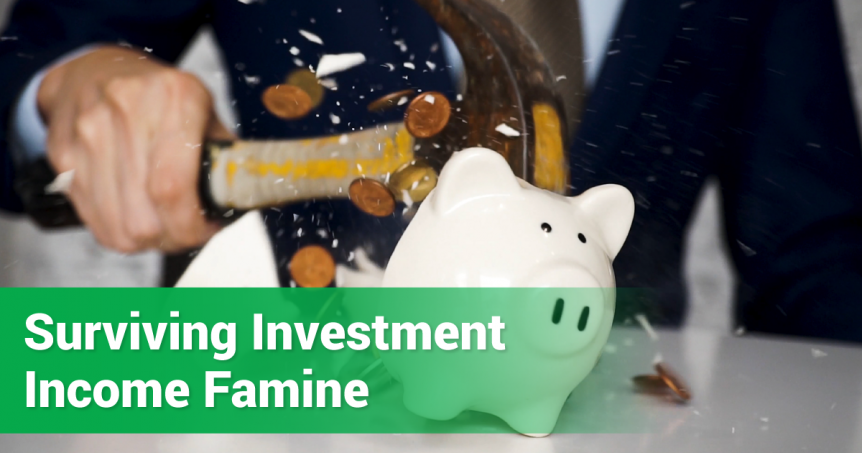I recently received a phone call from a client asking about our refresher courses for the Snider Investment Method. She took the Snider Method with her husband years ago, but her husband ended up doing all of the trading and record-keeping. He recently became ill and she will now have to take on the responsibility of taking care of their financial house.
“We are going to have a good year!”
Do you own shares of stock in the company you work for? Do they make up your entire 401(k) or just some of your “play money”? I’m amazed at the amount of clients and prospects I meet with that have a significant portion of their portfolio invested in their company’s stock. Familiarity and ‘insider knowledge’ seem to be the top reasons the hold the positions. They quickly forget stock picking is nearly impossible and even those with the greatest level of knowledge get it wrong.
Personal Financial Statements and Retirement
Earlier this week, I asked one of my clients, “What monthly expenses will you need to cover after you retire?” He responded by telling me how much he had accumulated in his retirement account. So I tried a different approach, “How much will you need to withdraw from your account each month to pay your bills?” This time, he answered by telling me how much he planned to invest. Finally, I realized that he wasn’t answering my question, because he didn’t know. He has always made a respectable salary, lived frugally, and saved diligently – but, he’s never once tracked his expenses. Sure, he has a general idea of what his expenses are. But is that good enough?
ETF Portfolio
Exchange Traded Funds (ETFs) are quickly becoming a significant piece in investment portfolios. As of December 2011, the total assets in ETFs exceeded $1 Trillion. Like index mutual funds, they track a basket of assets. Unlike index funds, they can be traded throughout the day and are optionable. This opens up the possibility to make them an integral part of a Snider Investment Method portfolio.
Winter: The Season Before Spring
Winter. The word alone brings images of kids playing in snow (unless you’re from Texas), Santa Claus, and a plethora of religious holidays such as Christmas, Hanukah, and Kwanzaa. However, to Snider Method investors, the word “winter” causes people to cringe and have premonitions of the Apocalypse. Winter is a term used in the Snider Method to describe a position that is not able to generate any option premium. Winter positions are never fun and I get many calls from clients asking how to get their positions out of winter, if there is some way to strategize their way out, or simply sell the position and move on. However, the question you should be asking isn’t “How do I escape winter?” but rather “What are the alternatives and is it better than waiting?” There are three main alternatives: selling the position and starting over, buying more stock to reduce the cost basis, and Transmogrification.
Tools for surviving the investment income famine
UPDATED 2019: This article, originally published in 2010, continues to be one of our most popular posts. Please keep in mind that it is possible some of the facts offered have changed throughout the years.However, our sentiments have not. Scott Burns and I agree on many things. We agree that you cannot beat the market by picking stocks. We agree …
Combine that with our verifiable track record, which most investor education companies don’t have, and you see why Snider Advisors is in a class of our own – and the perfect solution for many investors nearing and in retirement.
Monday - Friday | 8 AM - 5 PM
PHONE
888.676.4337
100 Decker Court Suite 120
Irving, TX 75062

Premium Content Locked!
Ultimate Retirement Planning Checklist














Premium Content Locked!
Master the fundamentals of equity options for portfolio income.










Climbing to Profits with an Options Ladder
Managing Risk of Market Declines










Stock Selection 101
A Smart Investor’s Guide to Success
Simple Strategies to Help You Rationally Evaluate Your Next Stock Purchase










Managing Investor Emotions
WHY YOU ARE YOUR OWN WORST ENEMY OF INVESTMENT SUCCESS














Premium Content Locked!
Snider Investment Method Owner's Manual










Enter your name and email address for bi-weekly investor tips & training:




Enter your name and email below to receive today's bonus gifts.




Spread the Word!
Your referrals receive a $300 discount off the full price of our workshop.












Retiree Secrets
for a Portfolio Paycheck


Enter your information below.




5 TIPS FOR INVESTING IN UNCERTAIN TIMES

